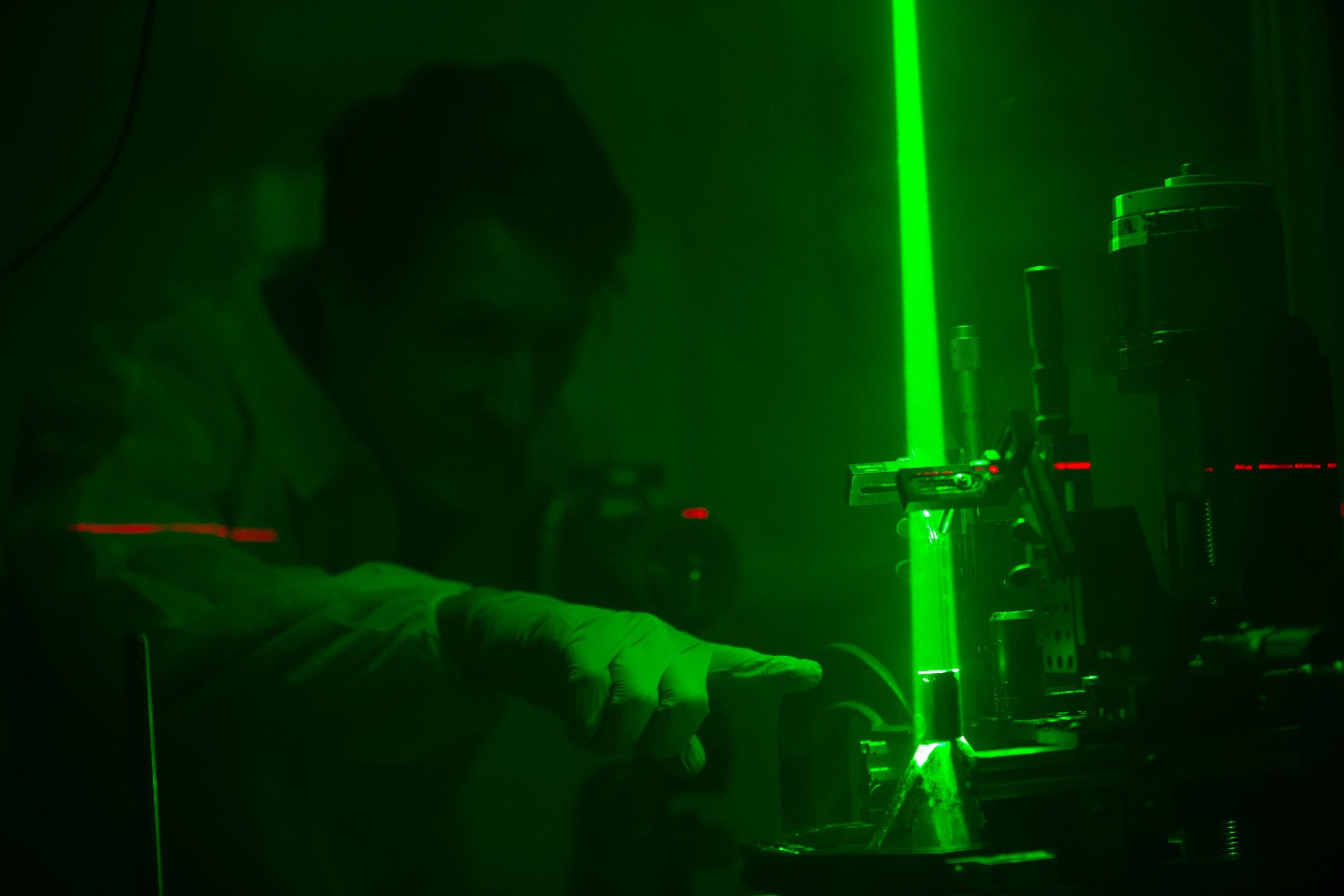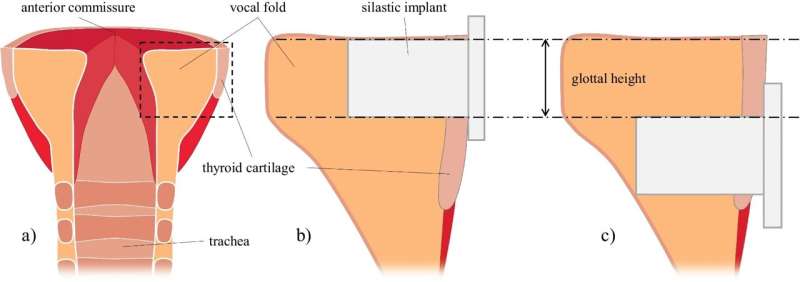Technology enables new understanding of voice and swallowing physiology


Charles Farbos de Luzan makes adjustments to the research facility while high-speed cameras, lasers and microphones record a variety of data. Image credit: Andrew Higley/UC Marketing + Brand.
Using data captured by high-speed cameras, coaches can spot flaws in a baseball pitcher’s throw or a golfer’s swing that are invisible to the naked eye in a split second, revolutionizing the sport for players and spectators.
The same technology is being adapted to provide a wealth of new information to researchers seeking to improve or restore patients’ voice and swallowing function.
“Voice and swallowing go hand in hand,” says Dr. Rebecca Howell of the University of Cincinnati. “As long as they work, nobody thinks anything of it until they’re taken away. But both impair our ability to connect with others.”
Howell and her colleagues use tiny high-speed cameras inserted through the patient’s nose to examine the throat and learn more about the mechanics of speech and swallowing.
“The vibrations of the vocal cords themselves, which give us our voice, and the act of swallowing both happen faster than the human eye,” said Howell, an associate professor in the departments of otolaryngology and head and neck surgery, director of the Laryngology Fellowship Program in UC’s College of Medicine, and a practicing surgeon and director of the UC Health Swallowing Center. “By using high-speed technology, we can see more. We’re talking about four milliseconds, which is a very short period of time.”
The high-speed images provide insights into the physiology of vocal mechanics and swallowing that were previously not possible.
A recent study involves both healthy human patients and those with an immobile vocal cord – a condition that can occur due to a stroke, a virus or after surgery. Patients with an immobile vocal cord often report a hoarse voice or difficulty drinking from a cup. The results were published in the journal European Archives of Otorhinolaryngology.

Schematic representation of the approximate position of the implants. a Coronal plane. b Glottal. c Infraglottal. Image credit: European Archives of Otorhinolaryngology (2024). DOI: 10.1007/s00405-024-08519-x
In addition to determining whether the procedure is tolerable for patients, the team is also using the new data in this pilot study to more accurately describe the physiology of voice and swallowing. Howell said the new knowledge will change the field’s understanding of the interface between voice and swallowing and provide new approaches to laryngeal and swallowing surgery.
“There is an anatomical area of the larynx that is simply not perceived and cannot be visualized with the equipment currently in use,” she said. “If we better understand the physiology, we can better understand the surgeries and interventions we take to correct anatomical differences.”
Howell is also working with Liran Oren and Charles Farbos de Luzan’s Laryngeal Biomechanics Laboratory to learn more about vocal fold vibration and stiffness. Trained as aerospace engineers, Oren and Luzan use airflow and aerospace principles to understand voice formation. Just as an airplane needs airflow hitting its wings in a streamlined manner to ensure smooth flight, streamlined airflow over the vocal folds results in a strong voice.
The same surgical techniques and vocal cord implants developed in the 1940s are still often used today to restore vocal function. Patients’ condition improves, but they do not regain their normal voice.
In the lab, the team uses an artificial lung to blow air through animal models’ larynxes and various implants to create sound. After Howell prepares each model with an implant or surgical technique she wants to test, high-speed cameras, lasers and microphones capture a variety of data.
Tangible, hard data can help eliminate the anecdotal or subjective perception of vocal cord surgery results, says Luzan, an assistant professor in the UC College of Medicine’s Department of Otolaryngology and the UC College of Engineering and Applied Science’s Department of Biomedical Engineering.
“Surgeons rely primarily on acoustic feedback to assess voice improvement when operating on patients with unilateral vocal cord paralysis,” Luzan said. “The long-term goal of this research is to educate laryngologists about the mechanisms of voice production from a physical perspective.”
As the research progresses, the team will use the data currently collected to develop and validate computer models that can be used as diagnostic tools and, ultimately, as virtual predictors for surgery to help surgeons choose the best treatment for their patients.
“What makes working with this lab so special is that they understand physics in a way that I don’t understand, but I can tell them that’s actually what we do in surgery,” Howell said. “It’s really fun to work with because you get to look at things in a whole different way.”
More information:
Liran Oren et al., Acoustic and aerodynamic effects after glottal and infraglottal medialization in an excised larynx model, European Archives of Otorhinolaryngology (2024). DOI: 10.1007/s00405-024-08519-x
Provided by the University of Cincinnati
Quote: Technology enables new understanding of voice and swallowing physiology (June 21, 2024), accessed June 21, 2024 from https://techxplore.com/news/2024-06-technology-voice-swallowing-physiology.html
This document is subject to copyright. Except for the purposes of private study or research, no part of it may be reproduced without written permission. The contents are for information purposes only.



